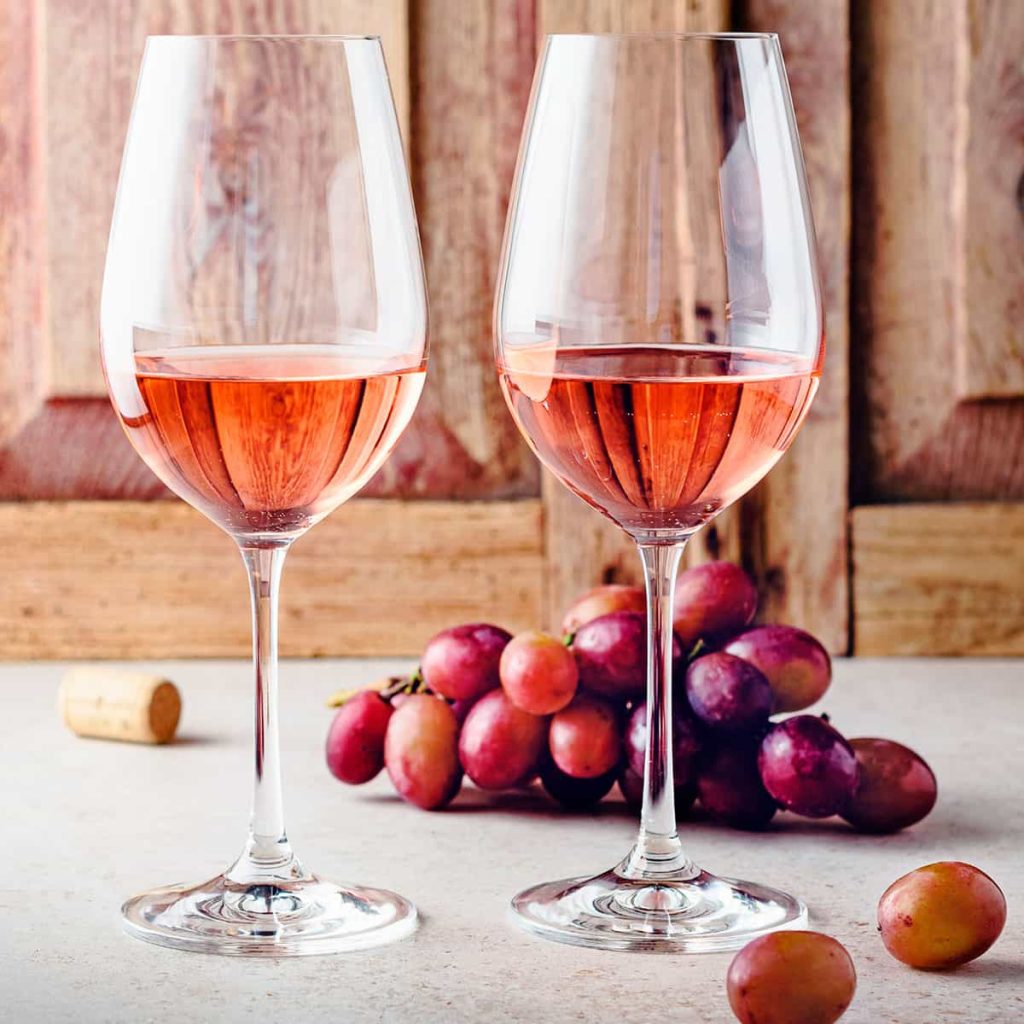Wine is an alcoholic and intoxicating beverage that is usually produced by fermenting grapes. Wine is also known as “vino.” It has a long history and is considered to be one of the oldest alcoholic beverages. If you’re new to the world of wine, you may be confused by the vast selection of wines available. Because there are several distinct categories of wine from which you might choose. In this article, I will share 7 different types of wine that you must know. Before we start, let’s learn more about wine.
Table of Contents
- What is so unique about wine?
- What varieties of grapes are used to make wine?
- What are the 7 different types of wine?
- Red Wine
- White Wine
- Rosé wine
- Orange Wine
- Sparkling Wine
- Fortified Wine
- Dessert Wine
What is so unique about wine?
The history of drinking alcohol is very old. From a health point of view, the disadvantages outweigh the benefits of drinking alcohol. However, it is still a part and parcel of our culture.
The unique thing about wine is that it can stimulate your senses of sight, taste, smell, and touch in a way that no other drink can. Most people love to drink wine, especially exclusive wine, because it has a stimulating effect on its drinkers. It causes the brain to release dopamine. This will make the drinker cheerful for a period. Aside from the taste, fragrance, and flavour, the occasion, situation, environment, and people with whom you are enjoying the wine may make it memorable and unique for you.
What varieties of grapes are used to make wine?
The two most common varieties of grapes are red and white grapes. The juice from white grapes has a greenish appearance. The red grapes, sometimes known as black grapes, have a reddish or purple appearance. Within those 2 categories, there are hundreds of different grape varieties that are utilized to produce thousands of different wine varietals.
However, there are 1046 different grape varieties listed on Wikipedia. These are organized into two major types of species (Single species grapes – 948 varieties and Multispecies hybrid grapes – 96 varieties). Click here for the list of grape varietals from Wikipedia.
Numerous categories of wine exist depending on factors including taste, aroma, flavour, fermentation process, used vessel, appearance, climate, grape variety, sweetness, winemaking method, ageing period, region, etc.


What are the 7 different types of wine?
Here are the 7 varieties of wine you need to be familiar with.
1. Red Wine
Red wine is derived from black grapes (dark-coloured red grape varieties). It obtains its colour and taste (particularly tannins) by fermenting with grape skins. The majority of purple grapes produce greenish-white wine, with the red colour originating from anthocyanin pigments found in the grape skin. After you take a drink, the tannish leaves a harsh, dry taste in your mouth.
Red wines are best enjoyed at or just below room temperature. This is due to the fact that red wine’s tannins turn bitter when drunk. The more tannins a wine contains, the darker or newer it is. Choose an older wine; it will be less dry and bitter in flavour. However, lighter, more acidic red wines may be delectable when chilled.
Red wine pairing is mostly a matter of personal opinion, but there are a few points to remember when getting started. Hearty meals like red meat or slow-cooked, rich dishes go well with bold, full-bodied red wines. Lighter reds go well with a variety of foods, including pizza, pasta, and even chicken.
Lighter-bodied reds have more acidity, less tannin, lower alcohol content, and red fruit flavours. Medium-bodied red wines have a combination of red and dark fruit flavours, moderate alcohol content, and light tannins. Full-bodied red wines have greater alcohol content, robust tannins, and black fruit and peppery characteristics. Red wine grape varieties include Pinot noir, Cabernet Sauvignon, Malbec, Tempranillo, Merlot, Bobal, Cinsaut, Zinfandel, etc.
2. White Wine
According to Wikipedia, white wine has been around for at least 4,000 years. It may be produced using both black and white grapes. White wine is not fermented with grape skins, but red wine is. Without any skin contact, white wine ferments. White wine is made by pressing grapes swiftly and removing the liquid from the grape skins quickly. White wine has little tannins; its acidity gives it fresh, crisp flavours.
White wine tastes better when chilled. The ideal temperature for it to taste is between 49 – 55 degrees Fahrenheit. A full-bodied white wine has a creamier and stronger taste that is often aged in oak. A light-bodied white wine is crisp and acidic and can also taste anything from citrusy to herbaceous. White wine is best paired with lighter fare like chicken, fish, and other shellfish, popcorn, cheese, curries, tacos, salads, and chips.
White wine grape varieties include Chardonnay, Sauvignon blanc, Muscat, Müller-Thurgau, Chenin blanc, Trebbiano, Viognier, Sauvignon gris, Pinot Meunier, Grenache Gris etc.
3. Rosé Wine
Rosé wine may be recognised by its blush-pink hue. Black grape skins give rosé wine its colour, but not enough to classify it as red wine. After a short period of time, the grape skins are peeled off and discarded. Skin contact (allowing the wort to get stained by black grape skins), saignée (separating the juice from the must early in the fermentation process and allowing the juice to finish fermenting on its own), and combining red and white wines are the three main methods for making rosé wine (unusual and discouraged in the majority of wine-growing areas). Any kind of black grape may be used to make rosé wine, and the location and grape variety used will both affect the wine’s flavour. Though some rosés are dry, it also contains little tannin. Rosé pairs nicely with light foods and snacks like fruit, chips, salsa, cheese, fish, chicken, and fish. The most well-known rose wines are Provence (French), Rosado (Spanish), and Rosato (Italian).
4. Orange Wine
Orange wine is also known as amber wine. These wines may be anything from dark gold to pale straw in colour. The name “orange” is a little misleading. It is made in the same way as red and rosé wine. The white grapes are used to make the wines, but the skins are left to soak while pressing. They have a distinct tannic flavour and are generally prepared dry.
Orange wine fits with both heartier dishes like chicken, pig, and beef, as well as lighter dishes. In comparison to white wines, orange wines are often served a bit warmer.
5. Sparkling Wine
The location where sparkling wines are made is reflected in their names. Sparkling wine is fermented in a bottle to create CO2 bubbles. These bubbles cause the wine to become effervescent and give it a light, sparkling character. Sparkling wines are sugared and flavoured white wines. However, it can also be red or rosé wine.
Light dishes like shrimp, salads, soft shellfish, cheeses, smoked salmon, fresh fruit, and popcorn are recommended as food pairings. Always serve sparkling wine at cold temperatures.
English sparkling wine, Champagne (frozen wine from France), Cava (sparkling wine from Spain), Prosecco (frozen wine from Italy), Lambrusco (red wine from Italy), sparkling rose, etc. are some examples of sparkling wines.
6. Fortified Wine
The addition of distilled alcohol, most often brandy, to wine results in the production of a wine known as fortified wine. It is typically quite rich in sugar and alcohol content. It is traditionally offered towards the conclusion of a meal. Port, Commandaria, Sherry, Madeira, Marsala, and the aromatized wine vermouth are only a few examples of fortified wines. Fortified wine paired nicely with baked foods including tarts, cheese, almonds, chocolate, and other sweet dishes.
While certain fortified wines, like port, may be served closer to room temperature, others, like sherry, should be slightly chilled. Whether it is red or white often makes a difference.
7. Dessert Wine
In the United Kingdom, dessert wines are also referred to as “pudding wines.” These are sweet wines that are usually served with dessert. Due to the fact that they are both on the sweet side, dessert wines and fortified wines are often mixed.
Dessert wine is made from several grape varietals, including Muscat, Ortega, Huxelrebe, etc. These grape varieties generate much more sugar by nature than others. However, more alcohol and sugar are also added manually in the process of dessert winemaking. Some popular dessert wines are raisin wine, ice wine, and noble rot.
It is ideal to drink the wine with other sweet dishes. Typically, the wine is sweeter than the dish it is served with. Red dessert wines are often served closer to room temperature, whereas white dessert wines are often served well chilled.
There are a lot more wine categories available. These are the basic varieties of wine that you have to be familiar with. I believe the wine category won’t overwhelm you anymore, and I also hope this post will be beneficial to you.
















